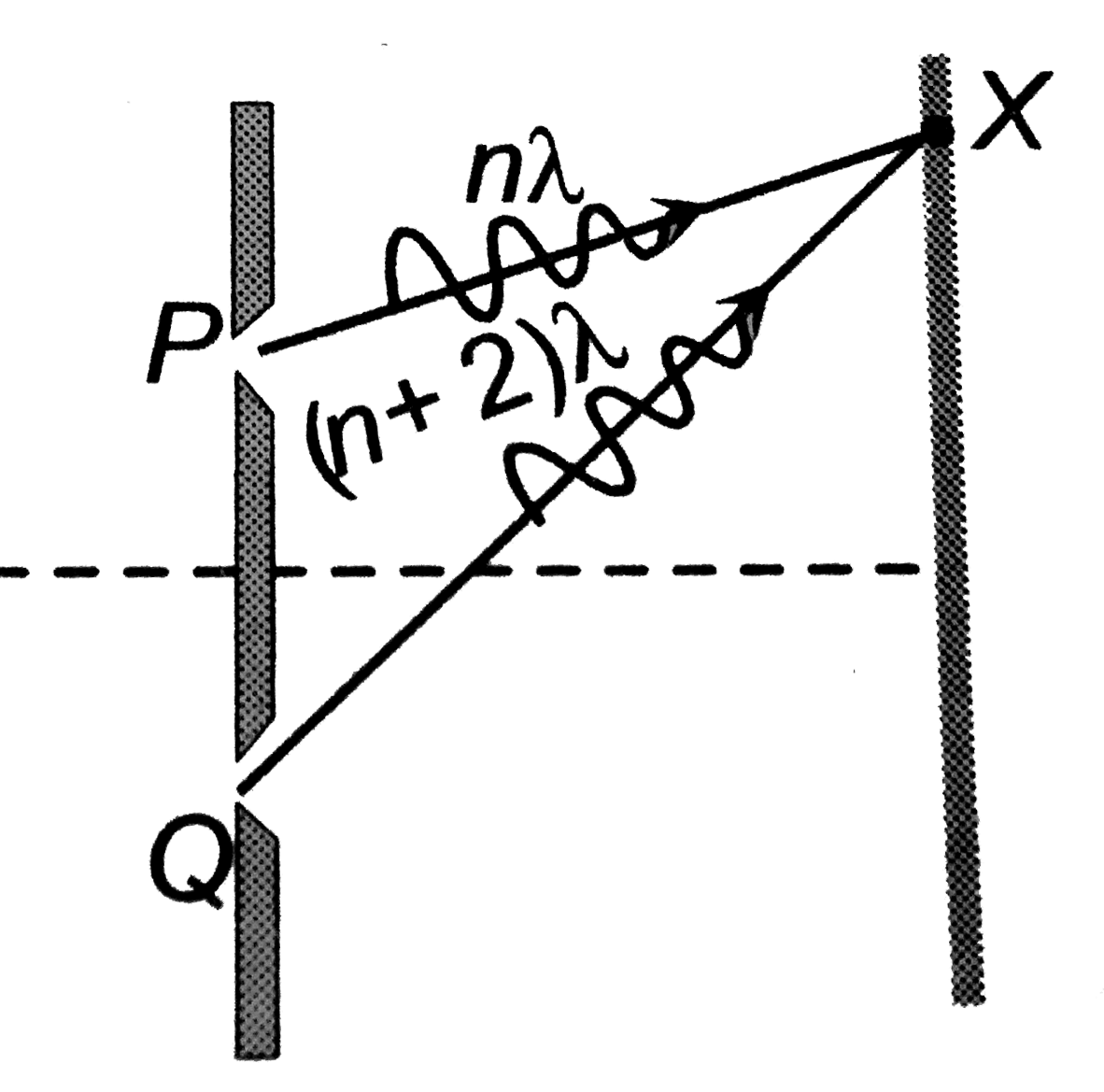The figure shows a double slit experiment with P and Q as the slits. The path lengths PX and QX are and respectively, where n is a whole number and is the wavelength. Taking the central fringe as zero, what is formed at X?

First bright
First dark
Second bright
Second dark
The correct Answer is:C
Step by step video, text & image solution for The figure shows a double slit experiment with P and Q as the slits. The path lengths PX and QX are nlambda and (n+2)lambda respectively, where n is a whole number and lambda is the wavelength. Taking the central fringe as zero, what is formed at X? by Physics experts to help you in doubts & scoring excellent marks in Class 12 exams.
Topper's Solved these Questions
Similar Questions
In a Young's double slit experiment, one of the slits is covered by a thin film of thickness t=0.04 mm, and refractive index μ=1.2+9×10−14m2λ2, where λ is the wavelength in meter. A beam of light consisting of two wavelength λ1=400nmandλ2=600nm falls normally on the plane of the slits. Find the distance between two central maxima in milimeter. Distance of screen from slits is 400 times the the separation between the slits.
View SolutionIn Young's double slit experiment, how many maxima can be obtained on a screen (including central maxima). If d=5λ2 (where λ is the wavelength of light)?
View Solution
Knowledge Check
- Question 1 - Select One
Fig show a double slit experiment, P and Q are the two coherent source. The path lengths PY and QY are nλ and (n+4)λ respectively where n is whole number and λ is wavelength. Taking the central bright fringe as zero, what is fromed at Y ?
 AFirst BrightBFirst DarkCFourth BrightDSecond Dark
AFirst BrightBFirst DarkCFourth BrightDSecond Dark - Question 2 - Select One
In a Young's double slit experiment, let S1 and S2 be the two slits, and C be the centre of the screen. If ∠S1CS2=θ and λ is the wavelength, the fringe width will be
AλθBλθC2λθDλ2θ - Question 3 - Select One
In a Young's double slit experiment using red and blue lights of wavelengths 600 nm and 480 nm respectively, the value of n for which the nth red fringe coincides with (n+1) th blue fringe is
A5B4C3D2
In young's double slit experiment sodium light composed of two wavelengths λ1 and λ2 close to each other (with λ2 greater than λ1 ) is used the order n upto which the fringes can be seen on the screen is given by
View SolutionIn Young's double slit experiment, wavelength λ=5000Å the distance between, the slits is 0.2mm and the screen is at 200cm from the slits. The central maximum is at x=0 The third maximum (Taking the central maximum as zeroth maximum) will be at x equal to
View SolutionIn a double slit experiment, the separation between the slits is d and distance of the screen from slits is D. If the wavelength of light used is λ and I is theintensity of central bright fringe, then intensity at distance from central maximum is
View SolutionIn Young's double slit experiment the intensity of light at a point on the screen where the path difference λ is K. The intensity of light at a point where the path difference is λ6 [λ is the wavelength of light used] is
View SolutionIn a Young's double slit experiment (slit distance d) monochromatic light of wavelength λ is used and the figure pattern observed at a distance L from the slits. The angular position of the bright fringes are
View Solution

